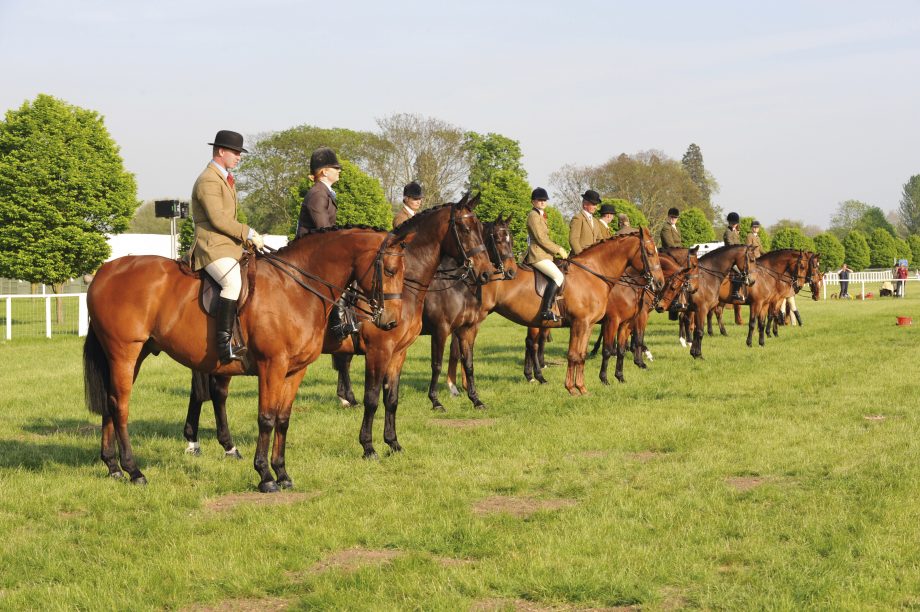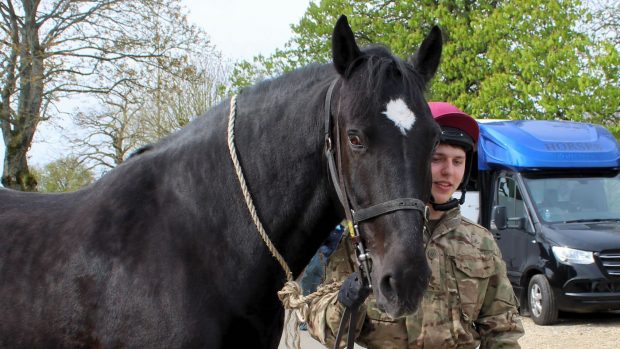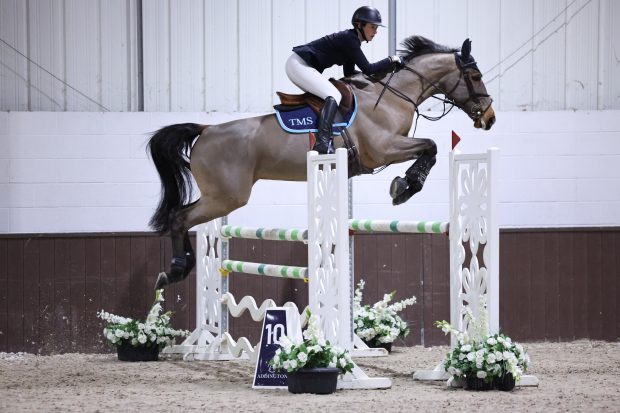Leading coloured producer and front woman of Traditional Show Cobs Sue-Helen Shuttleworth provides her top tips for turning out a hairy cob — native or traditional — for the show ring.
1. Mane and tail
Sue-Helen says that most of the preparation for a show is done at home.
“It starts in the winter months,” she says. “Traditional and native hair can be quite course so it requires extra conditioning as part of a daily and weekly routine.
“I spray diluted conditioner on weekly, and wash condition and rinse well on a regular basis. Once dry I would use a good mane/tail spray to spritz over. Tails are kept plaited but I leave manes alone and just plait the forelock out of the way for work.
“The hair should appear quality to match the rest of him as it is his crowning jewels so its important to take care of it year round. Rugs and hoods should be carefully considered and neck covers are only used in winter on my yard overnight.
“Care should be taken when bathing the hair. Scrub to the root so that grease is completely rinsed out. All I do for a show is brush the mane/tail through and add a little serum.”
2. Trimming
“When it comes to trimming/pulling opinions vary,” says Sue-Helen. “I always have my traditional’s manes pulled to a length that looks natural and shows off the length of rein. Forelocks are carefully trimmed to a V-shape. This is done with thinning scissors. It should go no longer than the nose. Native manes would be pulled to the same length as a Welsh section D or Connemara.
“With the tails, I pull or rake a little from the top so that it sits neatly into the quarters, more so for a native. Leave a traditional tail to floor length (but so they cannot stand on it). Native tails can again be trimmed to a V-shape to mid cannon length
3. Feather
Sue-Helen says that a traditional’s feather should come from in front and behind the knee in a bell bottom shape and cover the foot, whereas a native doesn’t need to have feather covering the foot, it can be just around the fetlock.
She adds: “As I live in a wet part of the country I do not turn out in the field over winter. My horses are let out in either my turnout pen or school. That way hair is not burned off with the mud and mud fever isn’t an issue.
“Traditionals and natives are both susceptible to feather mite so I paste on a mix a paste of pig oil and flowers of sulphur powder weekly. Ensure you do a sensitivity test first. This conditions and protects the hair and also helps keep them clear of mites. For anything that still stamps its feet, I would inject a dose of dectomax twice, ten days apart; be aware that this also worms them.
“Scabs behind the knee and in front of the hock are common (dermatitis) and I use something simple such as botanica ointment weekly to keep on top of it.
“I would wash and condition the feature regularly as maintenance, working right to the root, and again for a show. I would dry the feather with woodflour and then sprinkle talc on just before going into the ring. I don’t bandage unless really necessary. I would towel dry native feather before applying talc and bandaging once dry.”
4. Tack
Sue-Helen says: “Bridle wise, I would use plain, wide leather with a flat noseband to suit the width of the face. A wider noseband will break up a big white face or a more common head. I would then use a plaited or plain leather brow band.
“Traditionals and natives have a much thicker spine and wider barrel than any other type so I have found a specialist tree is required for comfort and stability for the horse. A classic show saddle shape is required for the ring ideally, to show off the shoulder. I have worked closely with Black Country Saddles and am very lucky to have their “cob” saddle named after me.”
5. Performance
“When training a hairy cob you should aim for a free and forward way of going and he should work in a soft, round but not over-bent or forced outline.
“As with any type we try to train the hind leg to do the work and leave the head alone until they are feeling strong and balanced.
“When watching a pony go in the ring, I like to see him travel and cover the ground whilst looking polite in the hand and not anticipating his next move.
“Aim for balance and self carriage through all paces, a mannerly ride and that all important smooth transition into and down from a show stopping gallop!”
Article continues below…
You might also be interested in:

New to showing? 10 tips from the top to help get you going
Are you new to the show ring? Leading showing producers, owners and judges share their advice on how to get

Subscribe to Horse & Hound this spring for great savings
6. Finishing touches
Sue-Helen also advises to check the rules for the particular society you are competing under but that she personally prefers a fully trimmed head – ears to jaw — to sharpen up the appearance.
“I carefully also trim any cat hairs from under the gullet, behind the elbow and down the haunches to give a clean outline from the side,” she says.
“Before entering the ring I would highlight over the eyes and around the muzzle with gloss (SPF used in summer). I then brush through and spray the tail, serum the mane and forelock, spot off any last minute leg stains, wipe the mouth and spritz over body/mane/tail with a spray shine.”
Don’t miss the latest issue of Horse & Hound magazine for all of the latest news and reports, plus our cob special, out now (23 May 2019)





